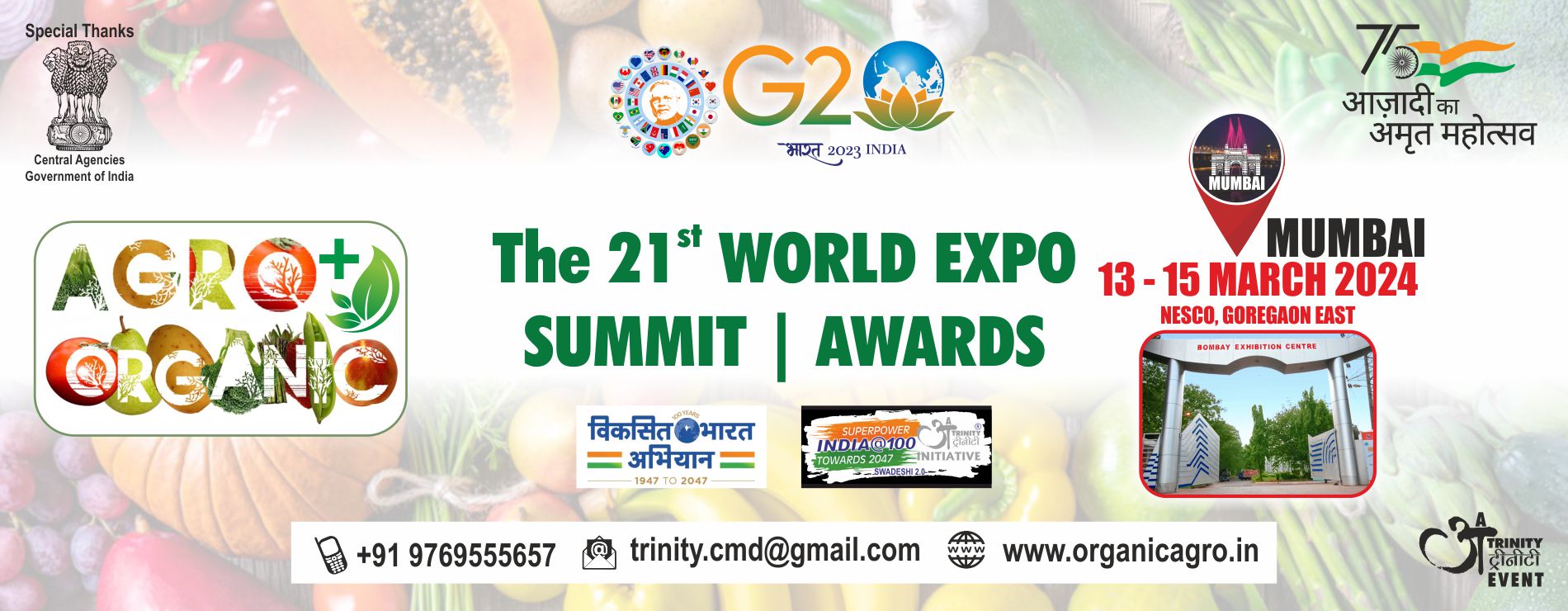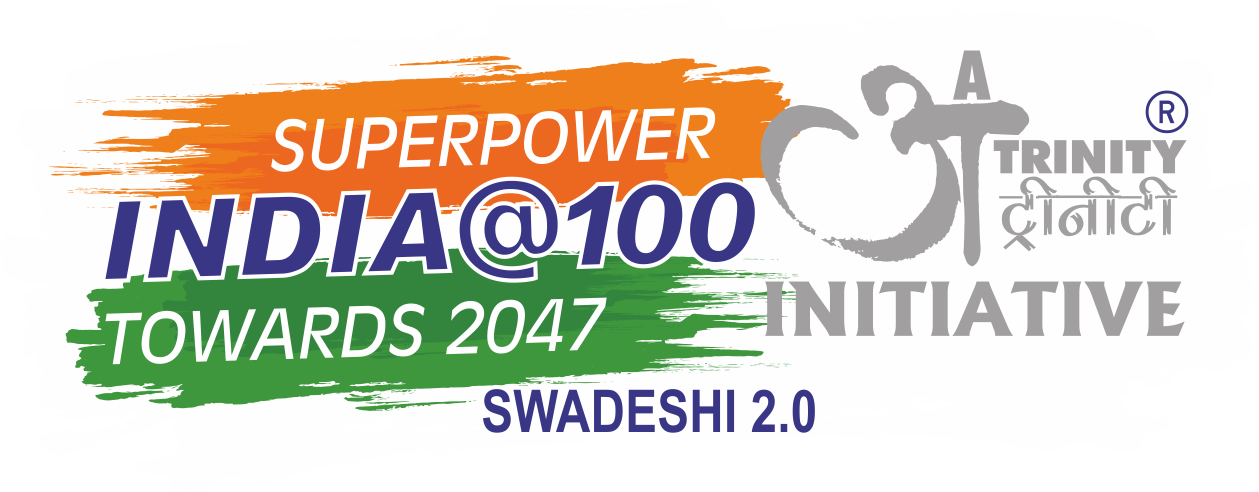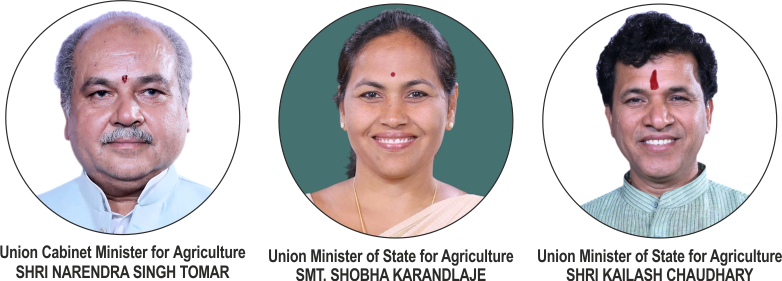




Towards a 100% Organic Nation

“Health awareness is increasing in the world today. Awareness about an environment-friendly lifestyle is increasing. More and more people are getting attracted to it. This means that its market is also growing. We can try to capture the market with the help of natural farming and organic farming. Our Krishi Vigyan Kendras and agriculture universities will have to mobilize with full force to take the benefits of natural farming to the masses. Each of our KVKs can adopt a village. Each of our agriculture universities can target to introduce 100 or 500 farmers towards natural farming within the next year.”
- Prime Minister Narendra Modi, March 11, 2022

2022 – as India celebrates Azadi ka Amrit Mahotsav, we proudly present The 20th ORGANIC AGRO INDIA World Expo | Summit | Awards – our small contribution towards making Superpower India @ 100 in 2047. The Trinity Group is a holder of 3 Guinness World Records & been an International B2B Event Producer for over 20 years. Our associates are The Chamber for Import, Export, Traditional & Integrated Health which is a MSME registered with the Union Ministry of Corporate Affairs for promotion of commerce especially for swadeshi / made-in-India products & services.
Jaivik – we have been organic or natural farming since thousands years of Vedic ages! The concept to India is not new. The great Indian civilization used plant or animal products as fertilizers or pesticides. What we call today – organic or natural farming, generations of our forefathers called it by different names mentioned in our ancient scriptures and literature – Rigveda, Ramayana, Mahabharata, Kautilya Arthasashthra, etc. Vedic Krishi, Sashwat Yoga Kheti, Dung-based Gou Mata Kheti, Vaishnav kheti, Ahinsa farming, Adhvoot Shivanand farming,Rishi Krishi or Homa Farming are some of names used. The Vedic principle of “you heal the atmosphere and healed atmosphere will heal you” was extensively followed. Sanskrit mantras (Agnihotra puja) were chanted as a way of life at specific times in the day before a holy fire. The ash that resulted from puja was used to energize composts, plants, animals …. in homa farming.
Objectives of The 20th ORGANIC AGRO INDIA World Expo | Summit | Awards
- Highlight & showcase the latest in the organic industry in India & overseas
- Make usage of organic farming & products – a way of life – as it was in Vedic times.
- Ensure sustainable, cost & energy efficient productivity through a 2nd Swadeshi Organic Revolution
- Facilitate profitability through market linkages between all stakeholders – producers, marketers, retailers, users etc.
- Be a Mega World Buyer-Seller Meet between FPOs/MSMEs or cottage industries and MNCs or large domestic industries
- Create a forum for interaction among all in the organic ecosystem to highlight international good practices & developments
- Provide a platform for policy-makers, industry, producers, processors, importers, exporters, etc to meet & share experiences or expertise
- Showcase innovation, appropriate technologies or tools and scientific evidence of Indian produce superiority capable of competing internationally.
- Serve as a catalyst and disseminate information on government schemes, incentives, supply chain management, business/resource/skill development etc.
The 20th ORGANIC AGRO INDIA World Expo | Summit | Awards is a forum for all stakeholders – Organic Producers, Aggregators, Processors, Value Chain Integrators and the Industry Partners – to interact and grow the organic ecosystem. Trinity’s AGRO ORGANIC & FOOD Trade Fairs have over the last 20 years contributed in a small way towards:
- Progress of the dry land, agribusines & horticulture farming.
- Reduction of chemicals in cultivation & farmers opting for eco-friendly alternatives
- Increased usage of new technologies, farm automation & modern inputs leading to better quality & quantity of produce
- Large number of non-farming population going back to agriculture, horticulture & related occupations, realizing the economic benefits
- More youth, women, urbanites are getting involved seeing the official incentives and after becoming aware of the health and sustainable advantages
The nationalist government under Prime Minister Narendra Modi ji has ensured multiple government initiatives to improve investments, increase credit availability, create market facilities, promote infrastructure development and increase the provision of high-quality inputs. Under the Paramparagat Krishi VikasYojana (PKVY) alone, 2 lakh hectares has been made suitable for organic farming thereby benefiting 5 lakh farmers. Organic farming is now a movement raising organic agricultural production to meet the market demand which is growing rapidly in India.
Major push to Natural Farming in Union Budget
Finance Minister Nirmala Sitharaman while presenting the Union Budget 2022-23 informed that chemical-free natural farming will be promoted throughout the country, with focus on farmers’ lands in a 5-km-wide corridors along the river Ganga in the first stage. The Gujarat government has announced to make the tribal district of Dang a 100% natural farming district. Over the next five years, around 53,000 hectares of Dang district will be converted to natural farming.
Our aim is to cultivate rich agrarian communities, like the Vedic times of yore – where natural farming was organic and sustainable with well informed farmers on the options and non-chemical alternatives available. Thus making organic agriculture a holistic and noble profession, besides being a profitably attractive industry to earn livelihood and also have more for market or exports.

- The India organic food market – US $ 1238 million in 2022
- Growing at a CAGR of about 23% between 2022 and 2028
- Estimated to reach over US $ 4602 million by 2028
Huge Potential & Demand
India ranks 5th in terms of World’s Organic Agricultural land and 1st in terms of total number of producers as per 2021 data. The APEDA, Ministry of Commerce & Industries, Government of India is implementing the National Programme for Organic Production (NPOP). The programme involves the accreditation of Certification Bodies, standards for organic production, promotion of organic farming and marketing etc. The NPOP standards for production and accreditation system have been recognized by European Commission and Switzerland for unprocessed plant products as equivalent to their country standards. With these recognitions, Indian organic products duly certified by the accredited certification bodies of India are accepted by the importing countries. India has a great deal of potential to produce all types of organic products, due to its diverse agro-climatic conditions. The market size of organic food is estimated to be 64 billion Indian rupees in 2025.
Organic farming is just in a nascent stage in India. About 2.30 million hectares of farmland was under organic cultivation as of March 2019. This is two per cent of the 140.1 million ha net sown area in the country. According to FiBL survey 2021 India holds a unique position among 187 countries practicing organic agriculture. India is home to 30% of total organic producers in the world having 2.30 million ha. Total organic cultivation area, 27, 59,660 total farmers (11, 60,650 PGS and 15, 99,010 India Organic), 1703 total processors and 745 traders.
Major Central & State Government Initiatives
Madhya Pradesh has covered largest area under organic certification followed by, Maharashtra, Gujarat, Rajasthan, Odisha, Karnataka, Uttarakhand, Sikkim, Chhattisgarh, Uttar Prdesh and Jharkhand. The Government of India encourages organic farming through financial assistance to farmers who are implementing organic farming under various government schemes, such as the Mission for Integrated Horticulture Development (MIDH), National Food Security Mission (NFSM), NMSA, and Rashtriya Krishi Vikas Yojana (RKVY). The latest Union budget has made three big announcements:
1. The establishment of Bhartiya Prakritik Kheti Bio-Input Resource Centers. Under this, 10,000 bio-input resource centers will be set up to create a national-level micro-fertilizer and pesticide manufacturing network.
2. PM-PRANAAM — PM Program for Restoration, Awareness, Nourishment and Amelioration of Mother Earth. Under this scheme, states will be incentivized to reduce chemical fertilizer consumption.
3. GOBARdhan (Galvanizing Organic Bio-Agro Resources Dhan) scheme. Under this, 500 new ‘waste to wealth’ plants will be established to promote a circular economy.
Key Factors Driving the Growth
The major drivers of the market include rising disposable incomes, increasing population, rising health consciousness, and consumer spending on health and wellness products. The growing awareness regarding the health benefits of organic food products, growing consciousness regarding the health hazards associated with chemical pesticides and fertilizers, and increasing investments by Indian corporate firms in agritech, agribusinesses and organic farming represent some of the key factors driving the market. The market is growing at a high rate owing to the rising consumer shift towards healthy and nutritious food with zero chemicals and the rising penetration of organic food products. Furthermore, government regulations regarding the safety and quality standards of organic food are further anticipated to influence the India organic food market growth
Export Value Realization
The total volume of export during 2021-22 was 460320.40 MT. The organic food export realization was around INR 5249.32 Crore (771.96 million USD). Organic products are exported to USA, European Union, Canada, Great Britain, Switzerland, Turkey, Australia, Ecuador, Korea Republic, Vietnam, Japan, etc. APEDA is also in the process of negotiation with countries like Taiwan & Canada. The global organic food and beverages market size was valued at US $ 188.35 billion in 2021 and is expected to expand at a compound annual growth rate (CAGR) of 13.0 % from 2022 to 2030. In terms of export value realization Processed foods including soya meal (61%) lead among the products followed by Oilseeds (12.85%), Cereals and millets (12.71%), Sugar (4.77%), Plantation crop products such as Tea & Coffee (2.16 %), Spices and condiments (1.72%), Pulses (1.1%0) and others.
